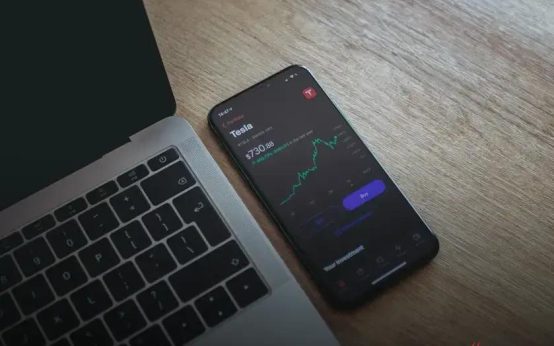Gold vs. Fiat Currency: which one offers more stability and value in 2024? As global economies face uncertainty, understanding the dynamics of tangible and intangible assets becomes crucial. This blog explores gold’s historical reliability as a store of value in comparison to the fluctuating nature of fiat currencies. We discuss inflation’s impact on purchasing power and predict future trends. Prepare to gain insight into factors influencing the financial market landscape, making informed investment decisions more accessible.
Understanding Gold’s Historical Value
Gold has been a valuable asset for centuries. Its significance dates back to ancient times when it was used as a form of currency and a symbol of wealth. Throughout history, gold has maintained its allure due to its rarity and intrinsic worth. Unlike modern fiat currencies, gold is not subject to inflation or the policies of central banks. This precious metal has been used in trade, adornment, and to back paper currencies, giving it a longstanding value that transcends cultures and eras.
During times of economic uncertainty, gold often becomes a safe haven for investors. This is because it is not directly tied to the financial systems that can fluctuate and fail. Historical events, such as wars and financial crises, have often resulted in a rise in the value of gold. Its durability and non-corrosive nature make it an ideal means of preserving wealth across generations.
The trust people place in gold is deeply rooted in its history as a reliable store of value. While paper money can be printed and devalued, gold offers a finite resource that has consistently held its purchasing power. In the global economy, it plays a significant role in diversifying investments and protecting against currency risk. As we move further into the 21st century, the historical value of gold continues to be a relevant aspect of its appeal, especially when comparing it to fiat currencies.
How Fiat Currency Operates

Fiat currency, unlike gold that has intrinsic value, is a type of currency that is issued by a government and does not have intrinsic value itself. Its value is largely derived from the trust and confidence that people and governments have in its value. Fiat currency is not backed by a physical commodity like gold or silver; instead, its value is based on supply and demand as well as the stability and economic strength of the issuing government.
One key characteristic of fiat currency is its centralized nature. Governments typically have the authority to print or take out of circulation as much currency as they see fit. This allows them to manage economic variables like liquidity, interest rates, and inflation. However, this control can also lead to economic challenges, such as hyperinflation if too much currency is printed without backing by strong economic policies.
Another aspect of fiat currency is its role in modern economies. It facilitates trading, acts as a store of value, and functions as a unit of account, which helps in breaking down complex goods and services into understandable and manageable currency denominations. This is considerably different from gold, which serves similar roles but with much less flexibility and more constraints.
Fiat currencies are convenient and are used globally for day-to-day transactions. The decentralized alternatives like cryptocurrencies still do not offer the same level of stability and governmental oversight as fiat currencies, which continue to be a cornerstone of financial systems worldwide. Despite criticisms like vulnerability to inflation, the flexibility and adaptability of fiat currencies remain a crucial aspect of modern economies.
The Impact of Inflation on Currencies
Inflation uniquely influences currencies by diminishing their purchasing power over time. While inflation is a natural component of economic cycles, its impact varies significantly between fiat currencies and gold.
Fiat currencies, which are government-issued, experience depreciation during inflationary periods. Central banks often try to control inflation through monetary policies, but excessive inflation can lead to the currency losing value rapidly. High inflation rates undermine consumer confidence, impacting savings and investment strategies.
Gold, on the other hand, is often seen as a hedge against inflation. Throughout history, gold has maintained its value during severe inflationary periods. Investors usually turn to gold as a safe haven to preserve wealth when fiat currency value declines.
Understanding how inflation affects different forms of currency is crucial for making informed financial decisions, especially in an era where the global economy faces unprecedented challenges and transformations.
Future Predictions for Gold and Fiat

Experts predict dynamic changes for both gold and fiat currencies as we move into the future. Considering the historical stability of gold, many analysts see it as a reliable safeguard against economic instability. The continued uncertainty in global economies might increase investor reliance on gold as a secure store of value.
Meanwhile, fiat currencies, although widespread, face challenges such as inflationary pressures and political decisions that can impact their value. With economic growth predictions fluctuating, fiat currencies might experience volatility, making them less attractive for long-term savings compared to gold.
Additionally, technological advancements and economic developments are expected to influence the adoption of digital currencies and the role they will play alongside traditional fiat. The potential introduction of Central Bank Digital Currencies (CBDCs) could transform how fiat is perceived, possibly increasing its flexibility but also changing its traditional nature.
As global economies adapt to these changes, individuals and investors may reassess the balance between holding gold or fiat to align with their financial strategies and economic forecasts. Understanding these trends will be vital in deciding which asset class could become the most valuable in the coming years.





